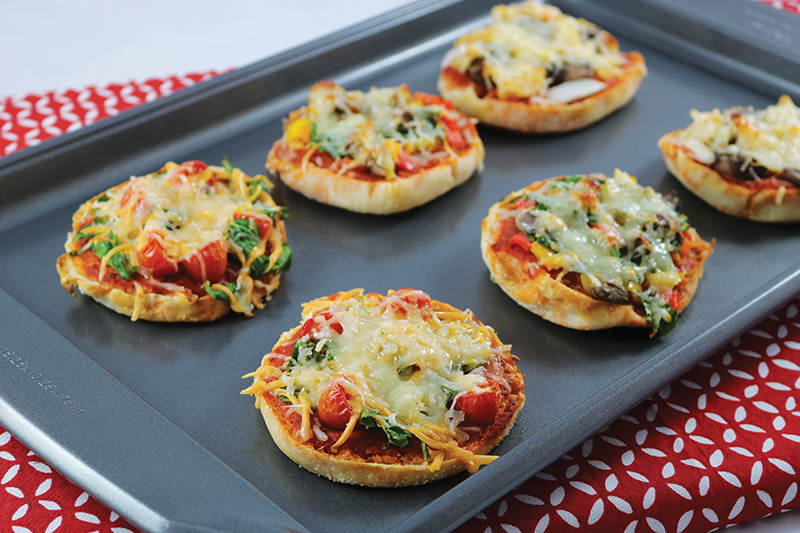Welcome to our nutrition during pregnancy series! This is a 3-part series on recommended nutrition and ways to stay healthy during pregnancy. We will go over recommended foods, foods to avoid or limit and finally in our last blog we will talk about ways to stay healthy with vitamins, hydration, physical activity and rest. We also recommend that you visit the USDA website which has many resources available for pregnant women, some of these resources cover more specific topics such as gestational diabetes, morning sickness, and healthy weight gain during pregnancy.

Let’s get started with recommended nutrition during pregnancy!
Good nutrition plays a key role in the health of mom and baby. As a mom-to-be, you have higher nutrient needs than you did before conception. But, the same general principles of good nutrition still apply—eat a variety of foods and try to choose balanced snacks and meals. Yes, you are eating for two but that does not mean eating double. Rather, eating for two means eating a diet rich in nutrient-dense foods. Nutrient-dense foods are full of vitamins, minerals and other nutrients your body and growing baby need.
Calorie needs increase by approximately 340 calories during the second trimester and 450 calories during the third trimester of pregnancy (these are recommendations for a single pregnancy, numbers will be slightly higher if carrying multiples). If you think about it, this really is not that much. Use the table below to help you when choosing easy and healthy snacks that are close to 340 and 450 calories:
| 300 to 340-calorie snacks | 400 to 450-calorie snacks |
| 1.5 cups cheerios with ½ cup 1% milk + 1 medium banana = 300 calories | 1 cup cooked oatmeal with ½ cup 1% milk and 1 Tbsp peanut butter + 1 medium banana = 400 calories |
| 1 mini bagel with 1 oz reduced fat cream cheese + 1 oz (1/4 cup or 1 small handful) of almonds = 350 calories | 1 serving homemade Mini Pizzas + 1 oz (1/4 cup or 1 small handful) of almonds = 400 calories |
| 1 serving of walnut oat apple crisp with 1 cup nonfat vanilla Greek yogurt = 310 calories | 1 Peanut butter sandwich (2 slices whole wheat bread with 2 Tbsp PB) + 1 cup nonfat vanilla Greek yogurt = 440 calories |
| Chicken quesadilla (1 whole wheat flour tortilla, 2 oz grilled chicken breast, 1/3 cup reduced fat fiesta blend cheese) = 330 calories | Chicken quesadilla (1 whole wheat flour tortilla, 2 oz grilled chicken breast, 1/3 cup reduced fat fiesta blend cheese) + 1 cup of sautéed vegetables = 430 calories |

Now that we’ve talked about increased calorie needs during pregnancy, let’s talk about the Academy of Nutrition and Dietetics (AND) recommendations for a healthy daily eating plan.
Protein:
Try to eat at least 5-6 ounces of protein such as lean meat, fish that is low in mercury (canned light tuna, salmon), or poultry.
If you do not eat meat, try similar amounts of other foods with protein such as beans, lentils, chickpeas, soy products, eggs, nuts or peanut butter.
| Examples of 1-ounce portions of protein foods |
| 1 large egg |
| ¼ cup tofu |
| ¼ cup cooked beans |
| 1 Tbsp peanut butter |
| 1 ounce of meat, fish or poultry |
Grains:
- Aim to eat at least 5-7 ounces of grains.
- Try to make ½ grains whole grains. These will provide more fiber, vitamins (especially B vitamins) and iron.
- Try to choose cereals and bread products that are fortified with iron—these, along with your vitamin will help you meet your iron needs during pregnancy.
| Examples of 1-ounce portions of grains |
| 1 cup ready-to-eat cereal |
| ½ cup cooked cereal, rice or pasta |
| ½ bun, small bagel or English muffin |
| 1 slice of whole wheat bread |
Fruit:
- Aim to eat approximately 2 cups of fruit per day. This includes whole fruits and 100% fruit juice.
- The Dietary Guidelines for Americans recommend that if you drink juice, limit juice to 100% fruit juice and only 1 cup per day. This means that at least half of your fruit intake should come from whole fruits.
| Examples of 1-cup portions of fruit |
| ½ large fruit like grapefruit or mango |
| 1 cup chopped or canned fruit (remember to choose fruit canned in 100% juice) |
| 1 cup (8 fl oz) 100% fruit juice |
| ½ cup dried fruit |
| 1 medium piece of fresh fruit |
Vegetables:
- Aim to eat approximately 3 cups of vegetables per day.
- Try to include at least 1 cup of dark-leafy greens like kale, collard greens and spinach—these are good sources of folate, iron and calcium (we will talk more about the importance of these nutrients when we talk about vitamins during pregnancy).
| Examples of 1-cup portions of vegetables |
| 1 cup cooked vegetables |
| 1 cup (8 fl oz) vegetable juice (remember to choose low-sodium) |
| 2 cups raw, leafy vegetables |
Dairy:
- Try to have at least 3 cups of low-fat or fat-free dairy foods to help get the recommended amounts of calcium and vitamin D.
- The Dietary Guidelines for Americans recommend to choose low-fat (1%) or fat-free (skim) milk.
| Examples of 1-cup portions of dairy |
| 8 ounces yogurt |
| 1 ½ ounces cheese (cheddar, mozzarella, Parmesan) |
| 2 ounces processed cheese (American) |
| 1 cup (8 fl oz) milk |
As you can see, a healthy eating plan includes eating a variety of nutritious foods from all five food groups: Protein, Grains, Fruits, Vegetables and Dairy. Try to include a balanced amount of the different food groups in snacks and meals to help you reach your nutrition goals during pregnancy.
We know that this is a lot of information to remember! A great way to start and calculate a pregnancy food plan is the USDA’s MyPlate tool. You can build your personalized MyPlate for Pregnancy Plan based on age, trimester of pregnancy, pre-pregnancy weight, height, and physical activity here.
Stay tuned for our next episode where we will talk about foods to limit or avoid during pregnancy! We will also talk about healthy alternatives to those foods!
